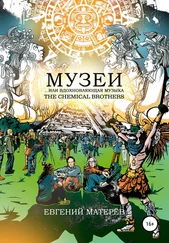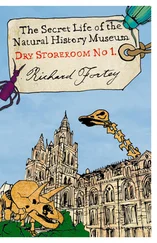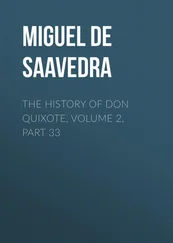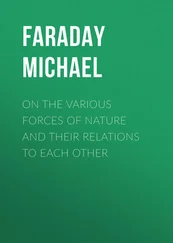Michael Faraday - The Chemical History of a Candle
Здесь есть возможность читать онлайн «Michael Faraday - The Chemical History of a Candle» — ознакомительный отрывок электронной книги совершенно бесплатно, а после прочтения отрывка купить полную версию. В некоторых случаях можно слушать аудио, скачать через торрент в формате fb2 и присутствует краткое содержание. Жанр: foreign_edu, Химия, на английском языке. Описание произведения, (предисловие) а так же отзывы посетителей доступны на портале библиотеки ЛибКат.
- Название:The Chemical History of a Candle
- Автор:
- Жанр:
- Год:неизвестен
- ISBN:нет данных
- Рейтинг книги:4 / 5. Голосов: 1
-
Избранное:Добавить в избранное
- Отзывы:
-
Ваша оценка:
- 80
- 1
- 2
- 3
- 4
- 5
The Chemical History of a Candle: краткое содержание, описание и аннотация
Предлагаем к чтению аннотацию, описание, краткое содержание или предисловие (зависит от того, что написал сам автор книги «The Chemical History of a Candle»). Если вы не нашли необходимую информацию о книге — напишите в комментариях, мы постараемся отыскать её.
The Chemical History of a Candle — читать онлайн ознакомительный отрывок
Ниже представлен текст книги, разбитый по страницам. Система сохранения места последней прочитанной страницы, позволяет с удобством читать онлайн бесплатно книгу «The Chemical History of a Candle», без необходимости каждый раз заново искать на чём Вы остановились. Поставьте закладку, и сможете в любой момент перейти на страницу, на которой закончили чтение.
Интервал:
Закладка:
But, before I shew that, let me explain to you—as it is quite necessary for our purpose—that, though I take a candle and give you, as the general result, its combustion in the form of a flame, we must see whether combustion is always in this condition, or whether there are other conditions of flame; and we shall soon discover that there are, and that they are most important to us. I think, perhaps, the best illustration of such a point to us, as juveniles, is to shew the result of strong contrast. Here is a little gunpowder. You know that gunpowder burns with flame—we may fairly call it flame. It contains carbon and other materials, which altogether cause it to burn with a flame. And here is some pulverised iron, or iron filings. Now, I purpose burning these two things together. I have a little mortar in which I will mix them. (Before I go into these experiments, let me hope that none of you, by trying to repeat them, for fun's sake, will do any harm. These things may all be very properly used if you take care; but without that, much mischief will be done.) Well, then, here is a little gunpowder, which I put at the bottom of that little wooden vessel, and mix the iron filings up with it, my object being to make the gunpowder set fire to the filings and burn them in the air, and thereby shew the difference between substances burning with flame and not with flame. Here is the mixture; and when I set fire to it, you must watch the combustion, and you will see that it is of two kinds. You will see the gunpowder burning with a flame, and the filings thrown up. You will see them burning too, but without the production of flame. They will each burn separately. [The Lecturer then ignited the mixture.] There is the gunpowder, which burns with a flame; and there are the filings—they burn with a different kind of combustion. You see, then, these two great distinctions; and upon these differences depend all the utility and all the beauty of flame which we use for the purpose of giving out light. When we use oil, or gas, or candle, for the purpose of illumination, their fitness all depends upon these different kinds of combustion.
There are such curious conditions of flame, that it requires some cleverness and nicety of discrimination to distinguish the kinds of combustion one from another. For instance, here is a powder which is very combustible, consisting, as you see, of separate little particles. It is called lycopodium 7 7 Lycopodium is a yellowish powder found in the fruit of the club moss ( Lycopodium clavatum ). It is used in fireworks.
, and each of these particles can produce a vapour, and produce its own flame; but, to see them burning, you would imagine it was all one flame. I will now set fire to a quantity, and you will see the effect. We saw a cloud of flame, apparently in one body; but that rushing noise [referring to the sound produced by the burning] was a proof that the combustion was not a continuous or regular one. This is the lightning of the pantomimes, and a very good imitation. [The experiment was twice repeated by blowing lycopodium from a glass tube through a spirit-flame.] This is not an example of combustion like that of the filings I have been speaking of, to which we must now return.
Suppose I take a candle, and examine that part of it which appears brightest to our eyes. Why, there I get these black particles, which already you have seen many times evolved from the flame, and which I am now about to evolve in a different way. I will take this candle and clear away the gutterage, which occurs by reason of the currents of air; and if I now arrange a glass tube so as just to dip into this luminous part, as in our first experiment, only higher, you see the result. In place of having the same white vapour that you had before, you will now have a black vapour. There it goes, as black as ink. It is certainly very different from the white vapour; and when we put a light to it, we shall find that it does not burn, but that it puts the light out. Well, these particles, as I said before, are just the smoke of the candle; and this brings to mind that old employment which Dean Swift recommended to servants for their amusement, namely, writing on the ceiling of a room with a candle. But what is that black substance? Why, it is the same carbon which exists in the candle. How comes it out of the candle? It evidently existed in the candle, or else we should not have had it here. And now I want you to follow me in this explanation. You would hardly think that all those substances which fly about London, in the form of soots and blacks, are the very beauty and life of the flame, and which are burned in it as those iron filings were burned here. Here is a piece of wire gauze, which will not let the flame go through it; and I think you will see, almost immediately, that when I bring it low enough to touch that part of the flame which is otherwise so bright, that it quells and quenches it at once, and allows a volume of smoke to rise up.
I want you now to follow me in this point,—that whenever a substance burns, as the iron filings burnt in the flame of gunpowder, without assuming the vaporous state (whether it becomes liquid or remains solid), it becomes exceedingly luminous. I have here taken three or four examples apart from the candle, on purpose to illustrate this point to you; because what I have to say is applicable to all substances, whether they burn or whether they do not burn,—that they are exceedingly bright if they retain their solid state, and that it is to this presence of solid particles in the candle-flame that it owes its brilliancy.
Here is a platinum-wire, a body which does not change by heat. If I heat it in this flame, see how exceedingly luminous it becomes. I will make the flame dim, for the purpose of giving a little light only, and yet you will see that the heat which it can give to that platinum-wire, though far less than the heat it has itself, is able to raise the platinum-wire to a far higher state of effulgence. This flame has carbon in it; but I will take one that has no carbon in it. There is a material, a kind of fuel—a vapour, or gas, whichever you like to call it—in that vessel, and it has no solid particles in it; so I take that because it is an example of flame itself burning without any solid matter whatever; and if I now put this solid substance in it, you see what an intense heat it has, and how brightly it causes the solid body to glow. This is the pipe through which we convey this particular gas, which we call hydrogen, and which you shall know all about next time we meet. And here is a substance called oxygen, by means of which this hydrogen can burn; and although we produce, by their mixture, far greater heat 8 8 Bunsen has calculated that the temperature of the oxyhydrogen blowpipe is 8061° Centigrade. Hydrogen burning in air has a temperature of 3259° C., and coal-gas in air, 2350° C.
than you can obtain from the candle, yet there is very little light. If, however, I take a solid substance, and put that into it, we produce an intense light If I take a piece of lime, a substance which will not burn, and which will not vaporise by the heat (and because it does not vaporise, remains solid, and remains heated), you will soon observe what happens as to its glowing. I have here a most intense heat, produced by the burning of hydrogen in contact with the oxygen; but there is as yet very little light—not for want of heat, but for want of particles which can retain their solid state; but when I hold this piece of lime in the flame of the hydrogen as it burns in the oxygen, see how it glows! This is the glorious lime-light, which rivals the voltaic-light, and which is almost equal to sunlight. I have here a piece of carbon or charcoal, which will burn and give us light exactly in the same manner as if it were burnt as part of a candle. The heat that is in the flame of a candle decomposes the vapour of the wax, and sets free the carbon particles—they rise up heated and glowing as this now glows, and then enter into the air. But the particles when burnt never pass off from a candle in the form of carbon. They go off into the air as a perfectly invisible substance, about which we shall know hereafter.
Интервал:
Закладка:
Похожие книги на «The Chemical History of a Candle»
Представляем Вашему вниманию похожие книги на «The Chemical History of a Candle» списком для выбора. Мы отобрали схожую по названию и смыслу литературу в надежде предоставить читателям больше вариантов отыскать новые, интересные, ещё непрочитанные произведения.
Обсуждение, отзывы о книге «The Chemical History of a Candle» и просто собственные мнения читателей. Оставьте ваши комментарии, напишите, что Вы думаете о произведении, его смысле или главных героях. Укажите что конкретно понравилось, а что нет, и почему Вы так считаете.
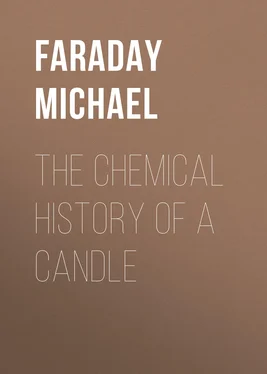




![Евгений Матерёв - Музеи… или вдохновляющая музыка The Chemical Brothers [litres самиздат]](/books/437288/evgenij-materev-muzei-ili-vdohnovlyayuchaya-muzyka-th-thumb.webp)
